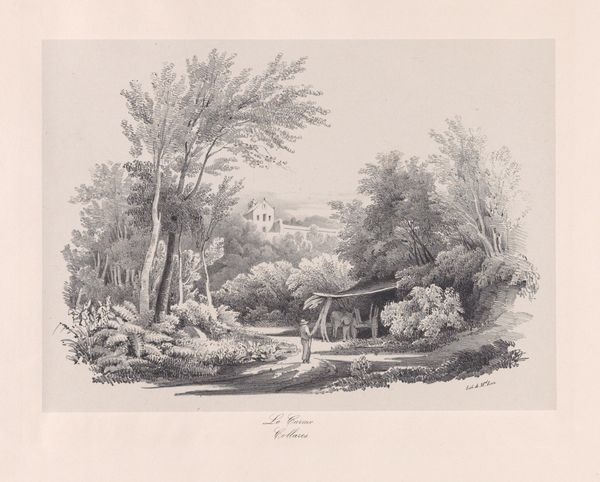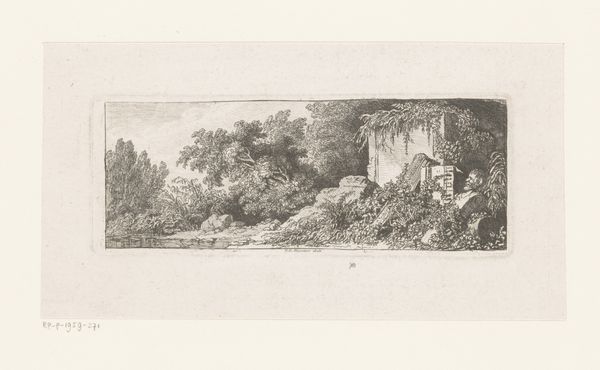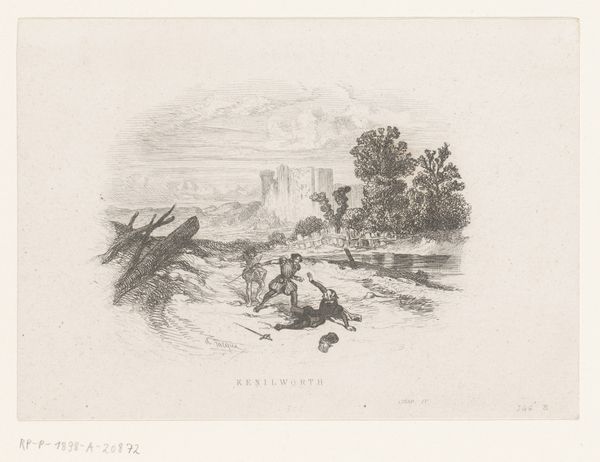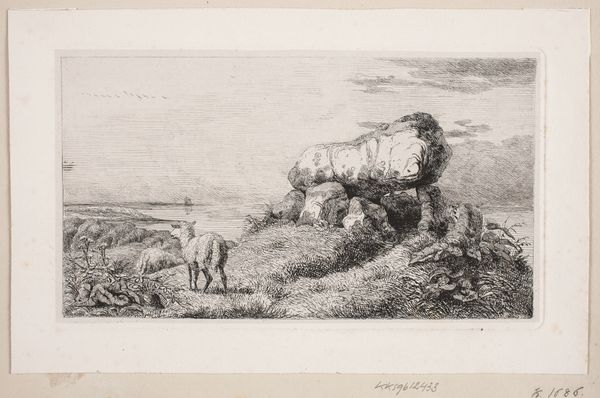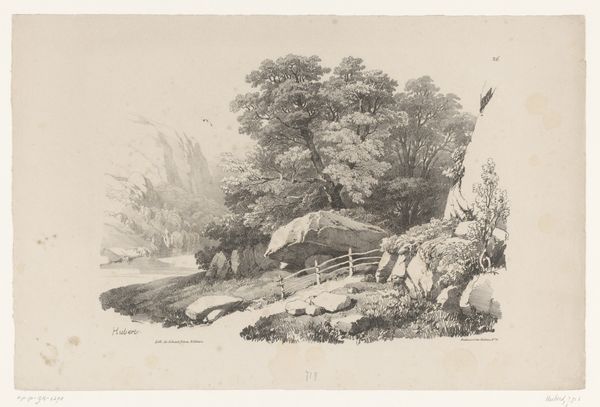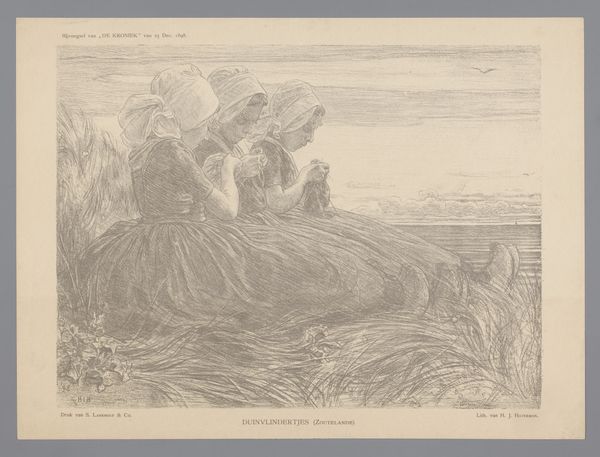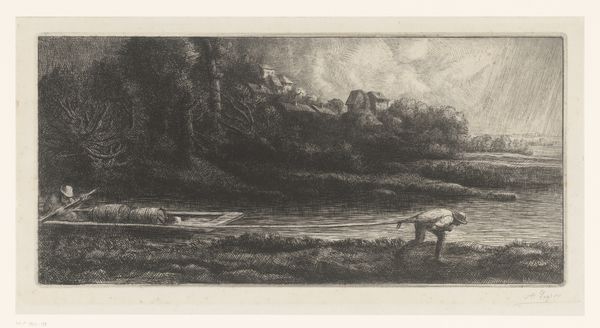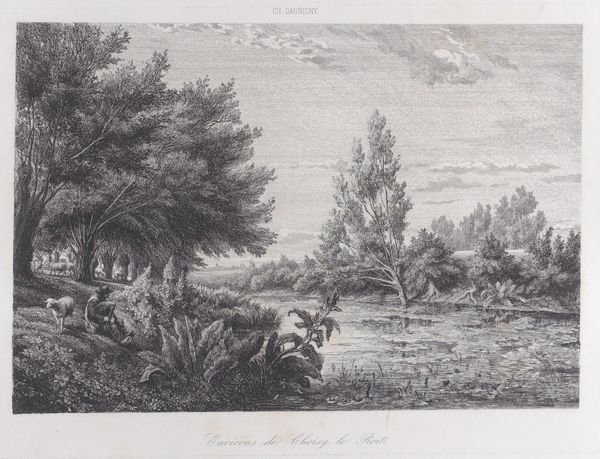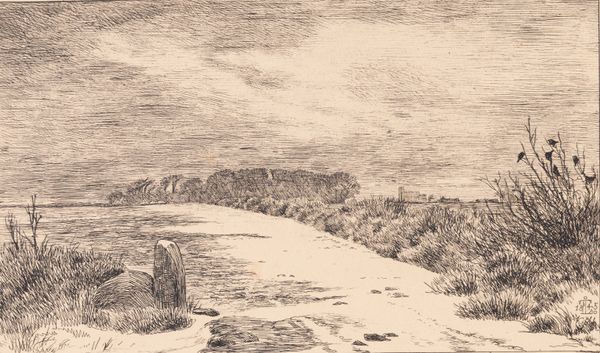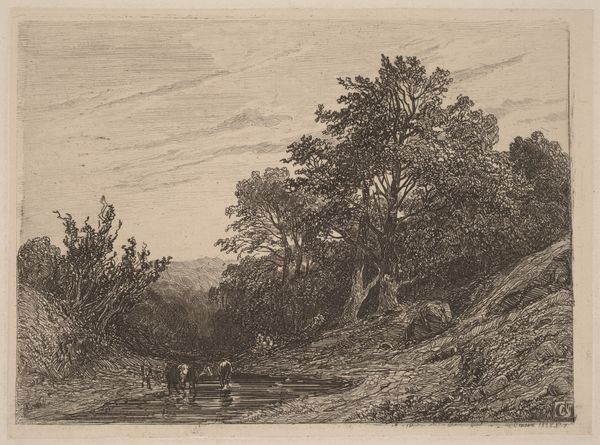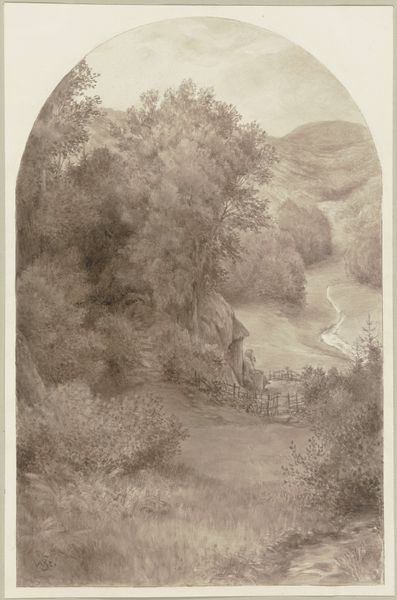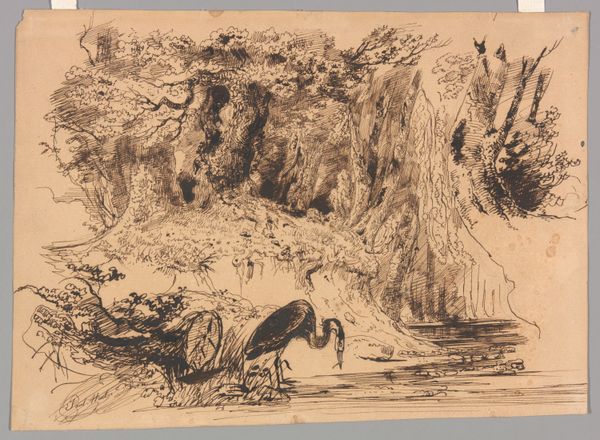
drawing, print
#
drawing
# print
#
landscape
#
bird
#
realism
Dimensions: Sheet: 12 1/8 × 17 1/16 in. (30.8 × 43.4 cm) Plate: 4 1/2 × 6 9/16 in. (11.5 × 16.6 cm)
Copyright: Public Domain
Editor: Here we have "Two Herons" by Karl Bodmer, made sometime between 1855 and 1865. It appears to be a drawing or print, housed at the Met. The delicacy of the lines almost makes it feel dreamlike. I'm curious, what do you see in this piece? Curator: From a materialist perspective, I'm drawn to the method of production here. The printmaking process, with its etched lines, was part of a broader effort to disseminate images. Prints made art more accessible but also relied on networks of labour – the artist, the printer, distributors. Was this print made to accompany a publication? Editor: I'm not sure about a publication, but that’s an interesting point. It challenges the traditional idea of the solitary artist creating something unique. Curator: Precisely! We also have to consider the socio-economic implications. How would this image of nature have been received by different audiences? The rise of printmaking coincides with the Industrial Revolution. Perhaps the seemingly untouched nature depicted in the work appealed to a growing urban population increasingly removed from rural life. Think about the cost of paper, the labour involved in making ink. These were all factors that influenced who had access to art and what kinds of images circulated. Editor: So you’re saying that the *process* of making art informs its meaning? Curator: Absolutely. The choice of materials, the methods employed, and the distribution networks, these all tell us something about the relationship between art, labor, and consumption in the 19th century. Did Bodmer produce his own prints, or employ others? That could influence the perception of artistry itself. Editor: This definitely gives me a fresh perspective on what to consider beyond just the aesthetic qualities of the artwork. It’s made me think about the social context surrounding its creation and distribution. Curator: And how its material existence connects us to the broader economic and social landscape of its time. Art doesn’t exist in a vacuum.
Comments
No comments
Be the first to comment and join the conversation on the ultimate creative platform.
